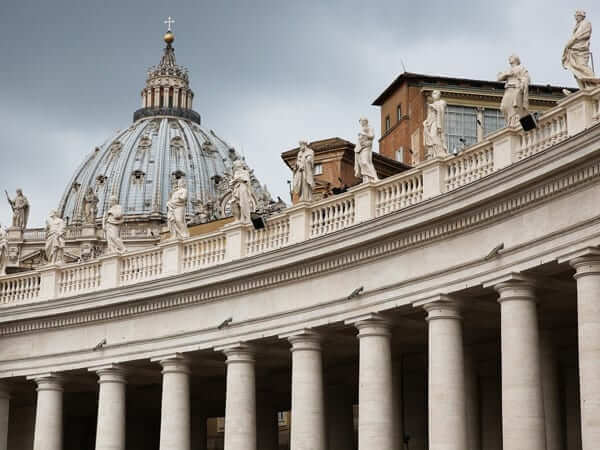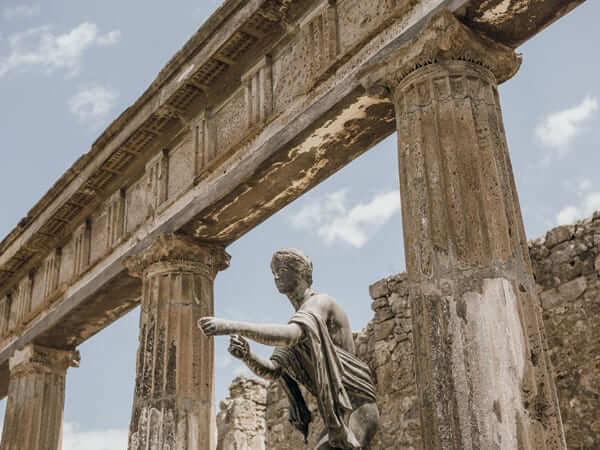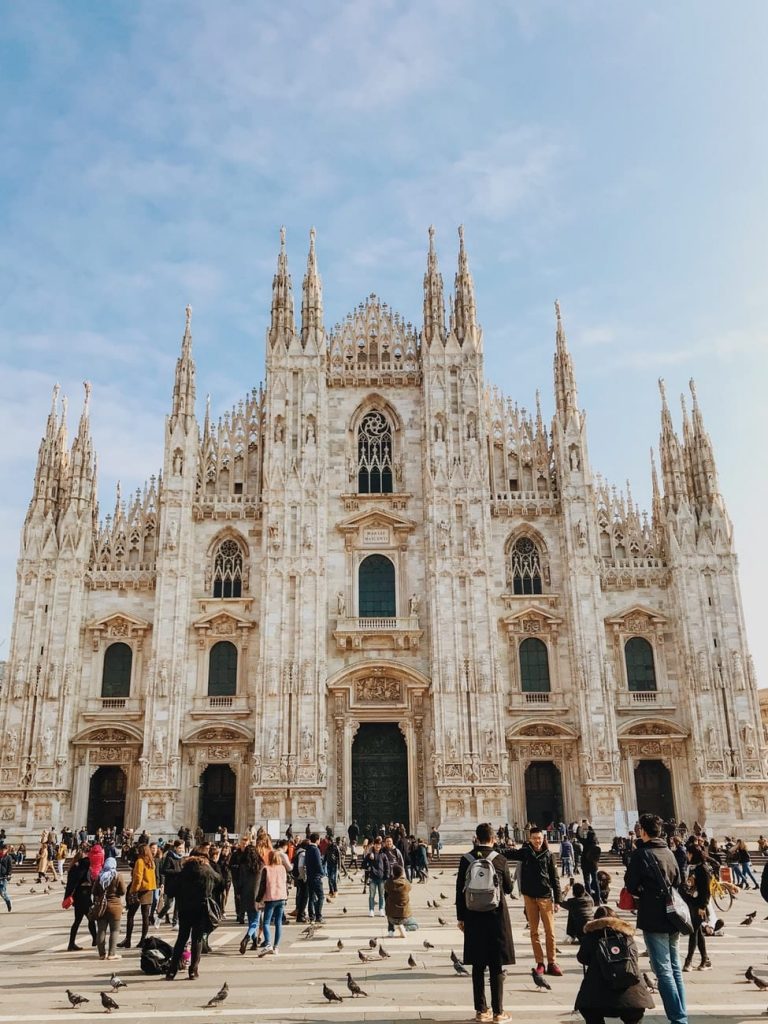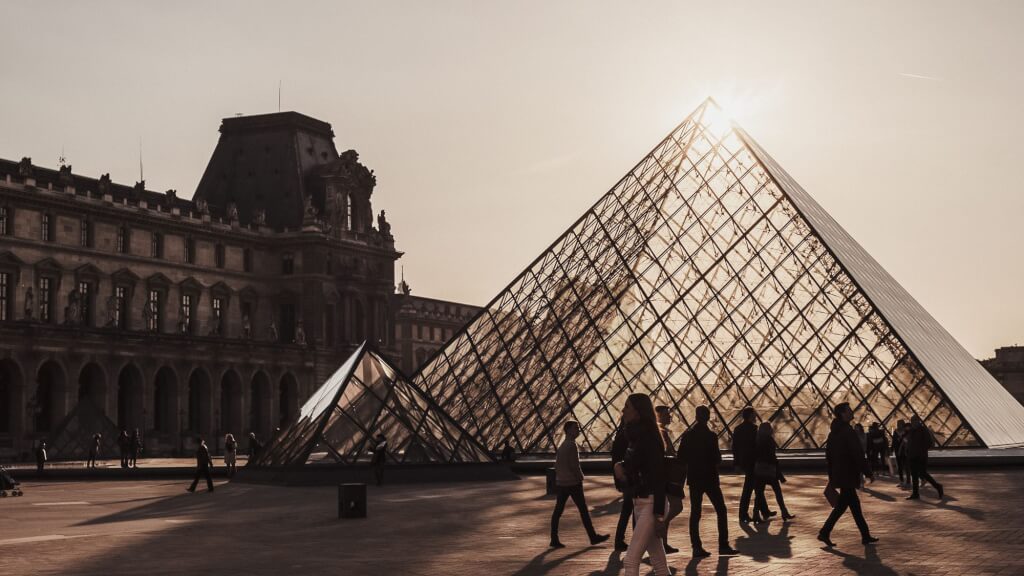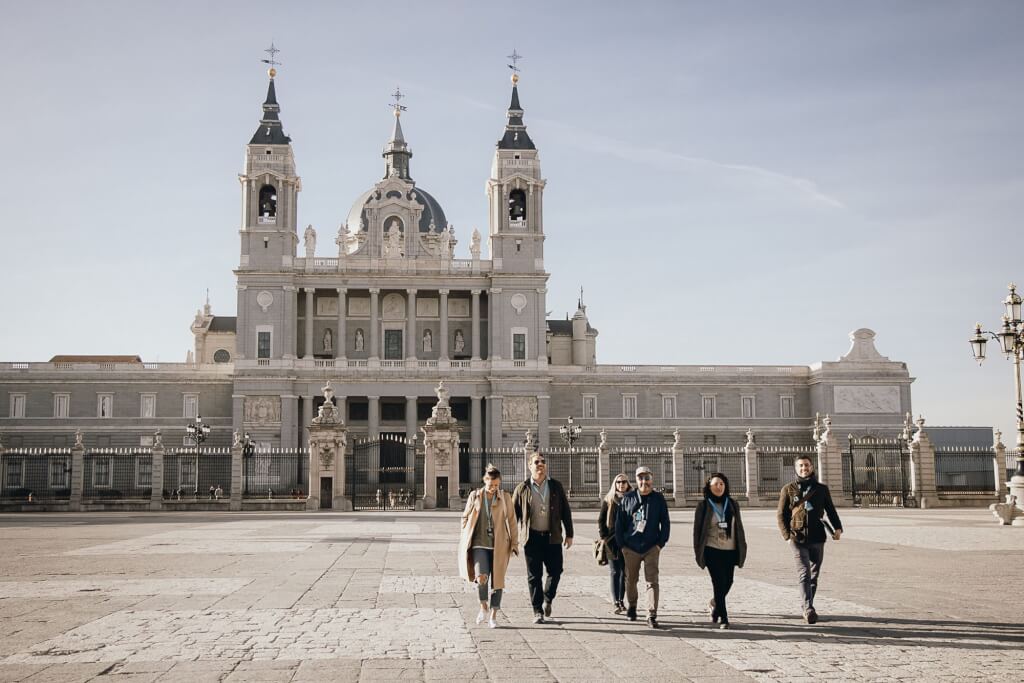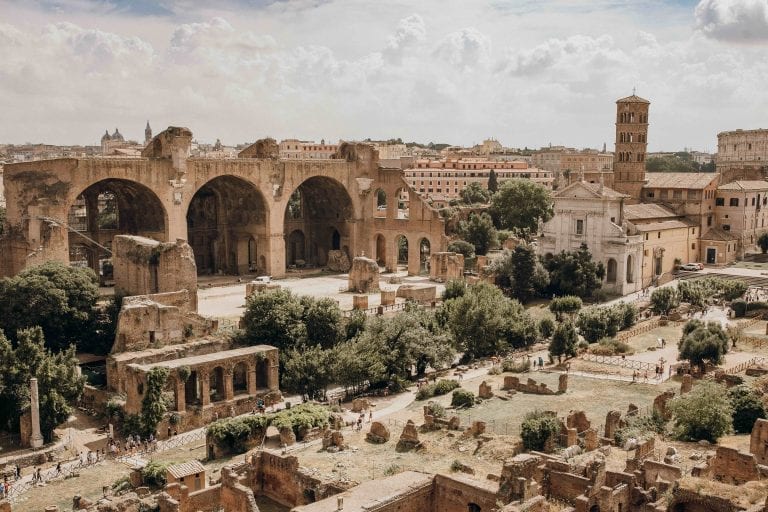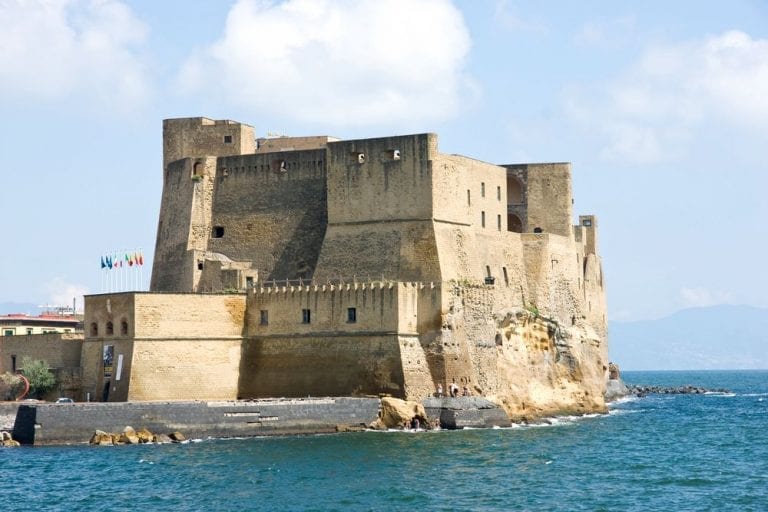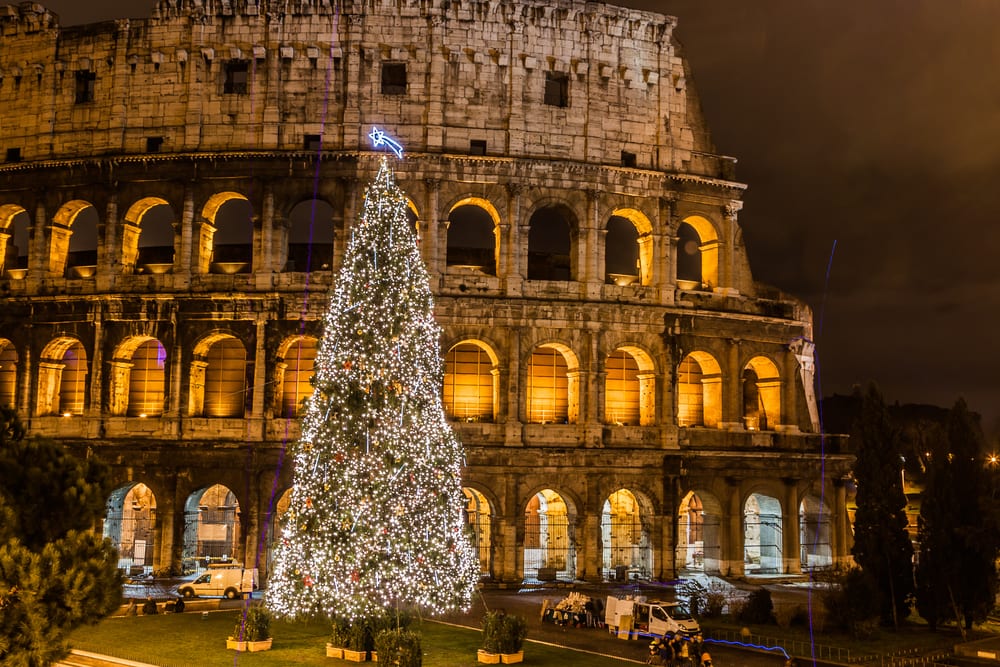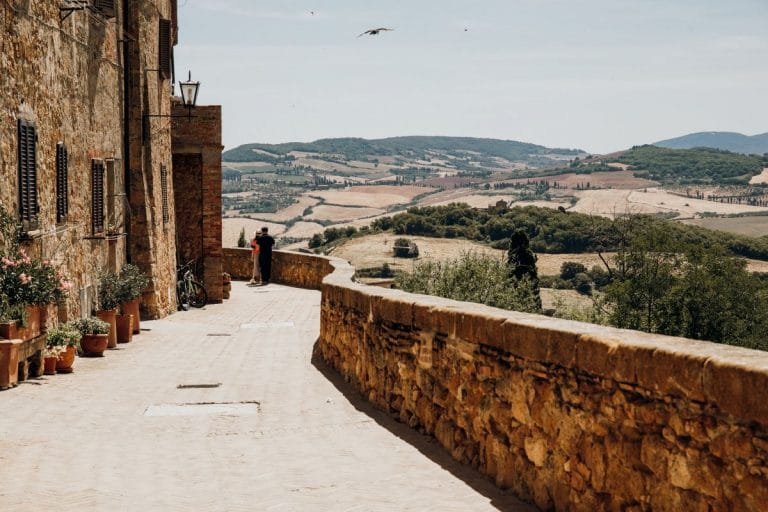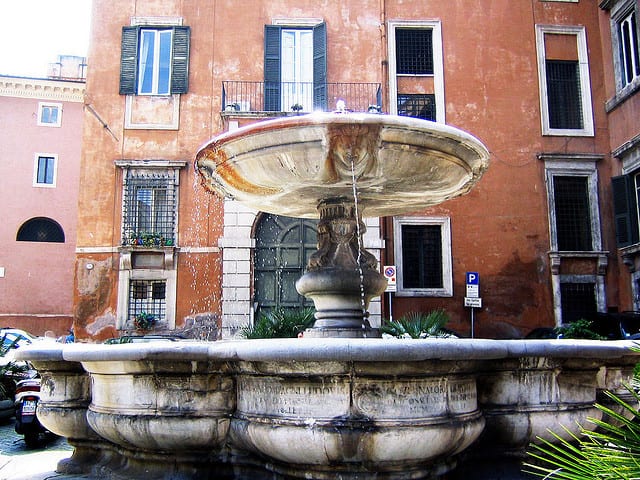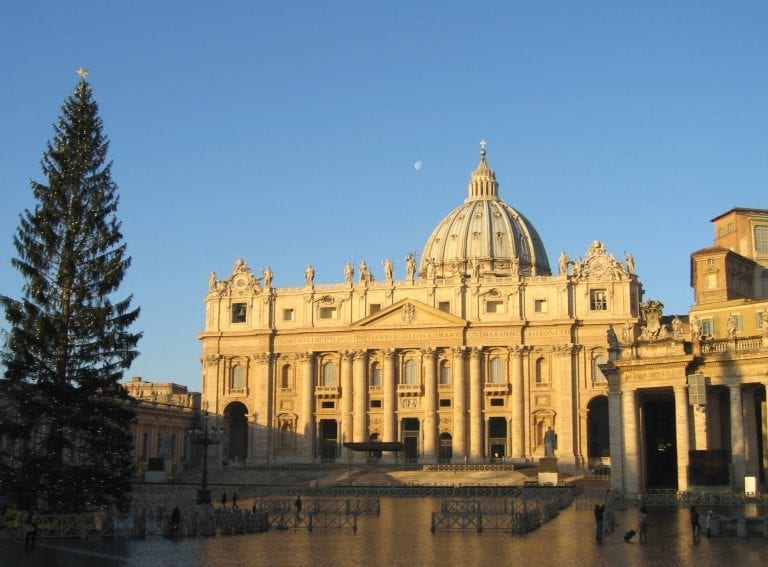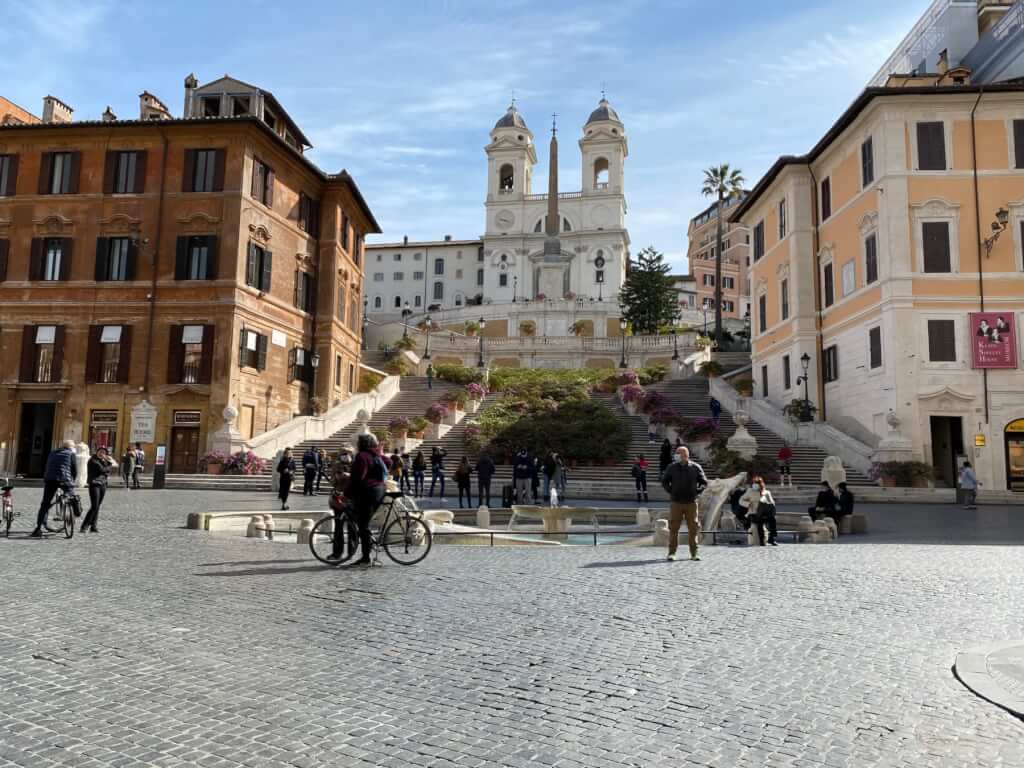
Where to Stay in Rome: How to Choose the Right Neighborhood for Your Visit
November 26, 2024
Deciding where to stay in Rome can be one of the most difficult aspects of visiting the Eternal City. There are 22 different rioni, or districts, of Rome. If that wasn’t confusing enough, each rione contains different neighborhoods that will change the feel and price of your stay. When deciding where to stay in Rome, it helps to know the defining characteristics of each one! From the hip Trastevere neighborhood to the charming Jewish quarter, there are places to stay in Rome for everyone. Though there are a variety of ways to view the divisions of Rome’s different neighborhoods, our guide will look at the city’s main neighborhoods in order to help you decide which one is best for you.
Read more: La Dolce Vita: 8 of the best luxury hotels in Rome
Table of Contents
ToggleCentro Storico
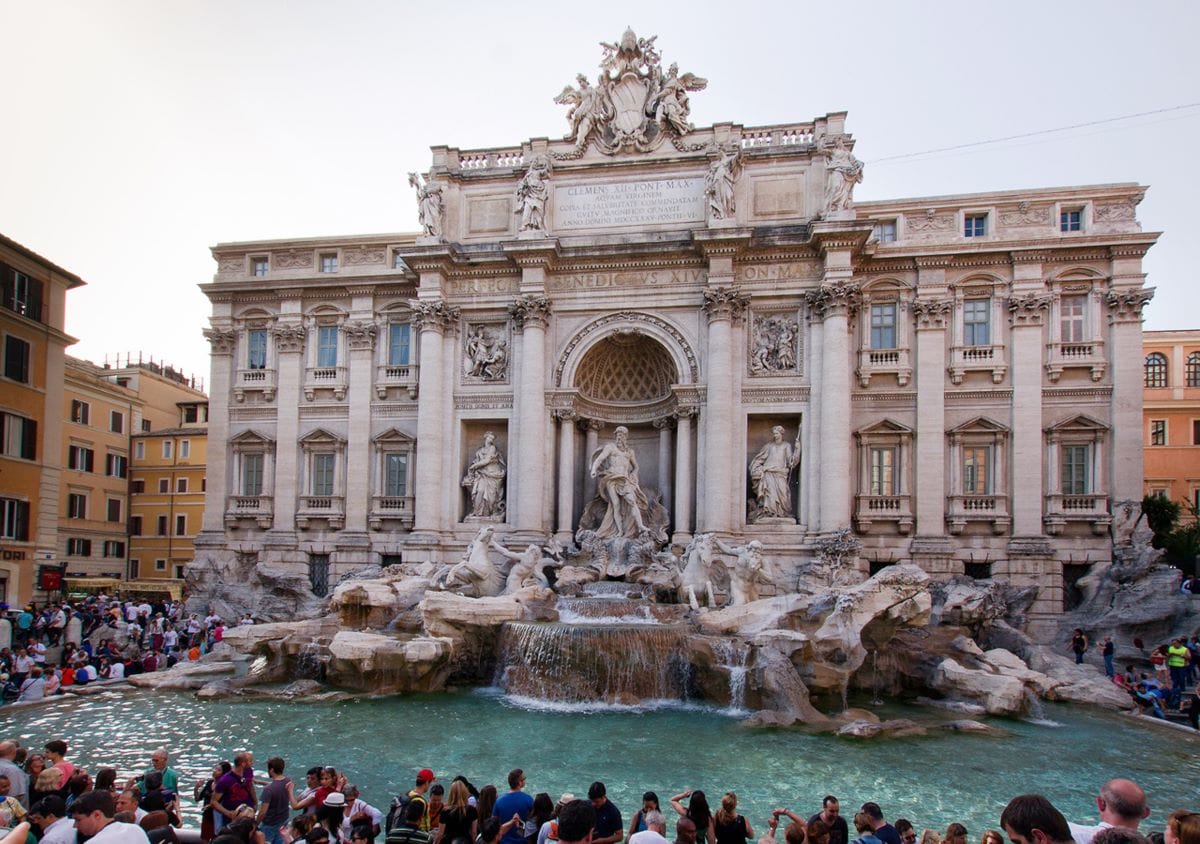
Taking a late-night walk around Trevi fountain is a magical experience.
The Centro Storico is the historical center of Rome. Though the actual division lines are subject to interpretation, we consider it the area encompassing Piazza Navona, the Pantheon, and the Trevi Fountain. It is separated from the neighborhood around the Spanish Steps (also technically part the Centro Storico) by style and price. The picturesque city center is home to most of the major sites that first-time visitors to Rome want to see. This means that it’s also one of the most crowded and touristy districts in Rome – not to mention expensive! Still, it’s hard to beat the convenience of leaving your hotel and being smack in the middle of the city.
Stay here if: your Roman vacation dreams include walking right out of your hotel into the heart of Piazza Navona; you want to walk everywhere; you don’t mind spending premium prices on accommodation and food.
The Centro Storico is where to stay in Rome if you’re short on time, but still want to see all the main sites in Rome. Did we mention how beautiful the Trevi fountain is at night? Now restored and better than ever, enjoy it along with Piazza Navona, the Pantheon and the Spanish Steps on our Twilight City Stroll. Guided by our local experts, this tour ends with a delicious gelato to welcome you to Rome!
Tridente and Via Veneto
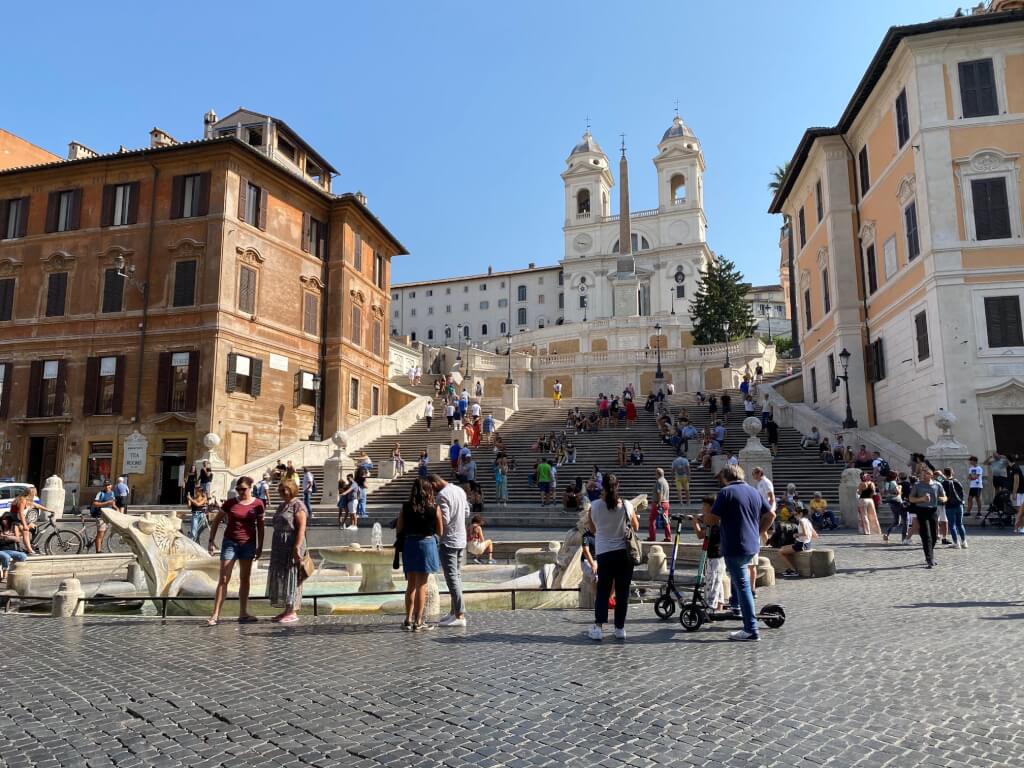
Another beautiful area to stay in Rome.
Though technically part of Rome’s historic city center, the Tridente neighborhood is quite noticeably among the most upscale areas of Rome. Tridente is filled with designer boutiques and 4/5 star hotels, but also the beautiful Spanish Steps, Trinità dei Monti church and the Medici Villa. Nearby Via Veneto is another upscale place to stay in Rome. It was the hotspot in the 1950s and ’60s, filled with celebrities, politicians, film stars, paparazzi, and various other hangers-on. It’s lost some of its allure since then, with more businessmen than cameramen, but you can still find elegant restaurants and luxury hotels here.
Stay here if: you want to be centrally located and classy; price isn’t a problem for you; you’re planning on doing some serious luxury shopping; you’ve always dreamed of walking with Roman VIPs on your Roman vacation; you want to stay in a luxury hotel.
Jewish Ghetto
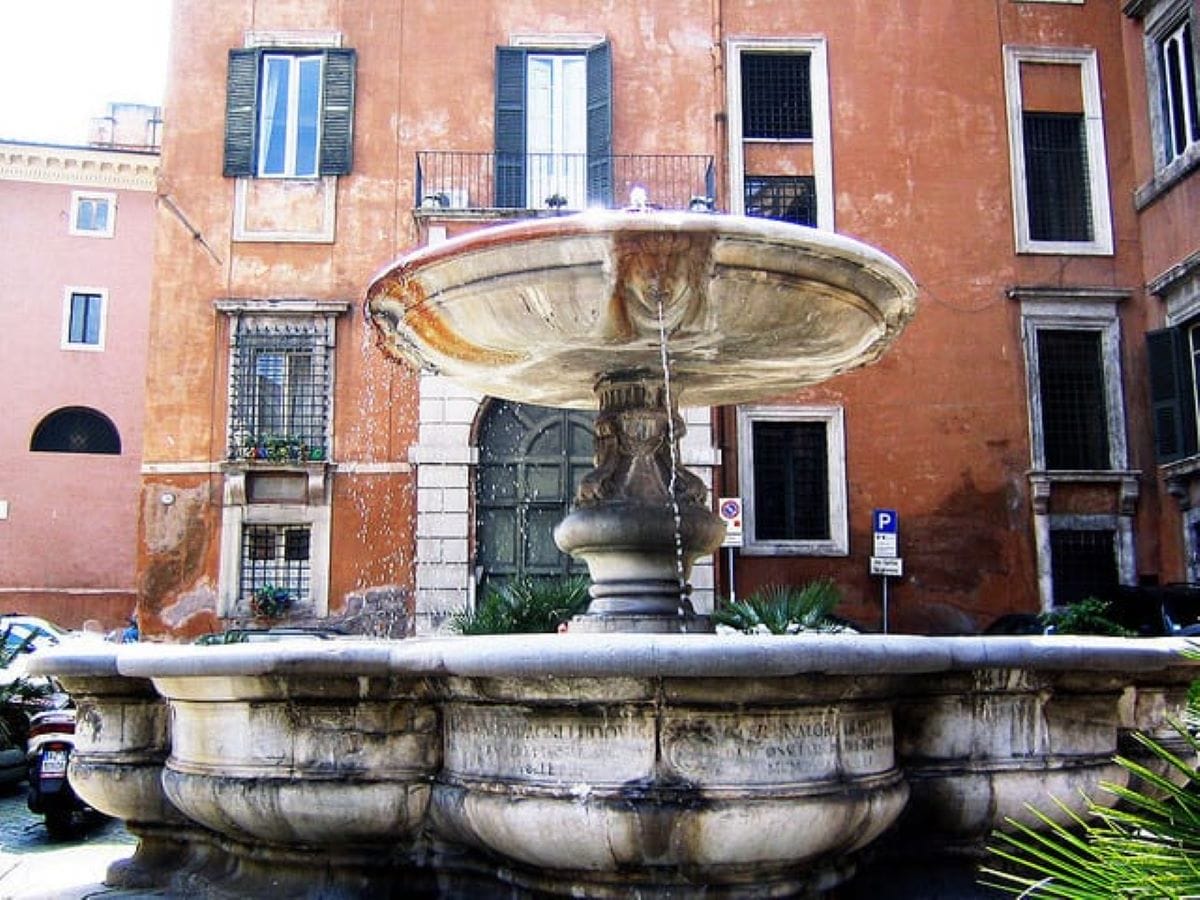
The old Jewish Ghetto is a mosaic of ancient gems with the nuances of the modern day. Photo by Anthony Majanlahti
Though the Jewish Quarter was originally created to keep the Jewish community in, the neighborhood is now a beautiful and thriving testament to the history and influence of Europe’s oldest Jewish community. Tucked into the heart of the city, right next to the Centro Storico, the old Ghetto is a charming district that still feels true to its ancient roots.
With wonderfully crooked streets and a lovely old town atmosphere, the Jewish Ghetto runs from Piazza Venezia to the Tiber River. Attractions inside it include the Campo de’ Fiori market, Piazza Farnese, and ancient ruins like the Teatro Marcello, or “Jewish Colosseum”. Be sure to see the Great Synagogue and the Bocca della Verità, or the Mouth of Truth. It’s said that the stone mouth will bite off the hand of anyone not telling the truth. Check out our Visitor’s Guide to Rome’s Jewish Ghetto for more ideas on what to see.
Stay here if: you want to stay centrally located; you want the history and atmosphere of Piazza Navona, but prefer to avoid the large crowds; you appreciate great dining*; you want a more authentic Roman experience.
*The old Jewish Ghetto is one of the culinary gems of Europe and a great place to stay in Rome for Gastronomic travelers. Read our guide to Rome’s Jewish food to get an idea of the delicacies that originated in the old Ghetto.
Stazione Termini and Esquilino
Hundreds of people come in and out of the Stazione Termini per day, making the area a hodgepodge of tourists, immigrants, and frequent travelers. Photo by hakzelf (flickr)The prime advantage of staying in the area surrounding Rome’s Termini station is that it’s packed with a plethora of inexpensive hotel options. The area isn’t especially beautiful and there’s not much to see from a tourism perspective, but it’s relatively calm, inexpensive, and safe. It’s also where to stay in Rome for those who need to move quickly and/or often, either via train or metro.
Spreading around Termini is Esquilino, Rome’s immigrant district par excellence. Here you’ll find hawkers, food shops with delicacies from all over the world, and the large, Chinatown-esque Esquilino market.
Stay here if: you want solid accommodation at a good price; you don’t mind staying outside the city center; you’re staying in Rome but have an early-morning train connection to another city; you aren’t interested in staying out late; you want to be close to the sights in Monti but enjoy a better price.
Filled with low-cost hotels and B&B’s, this is where to stay in Rome for budget travelers who don’t mind taking a short metro ride into the city center for sightseeing.
Monti
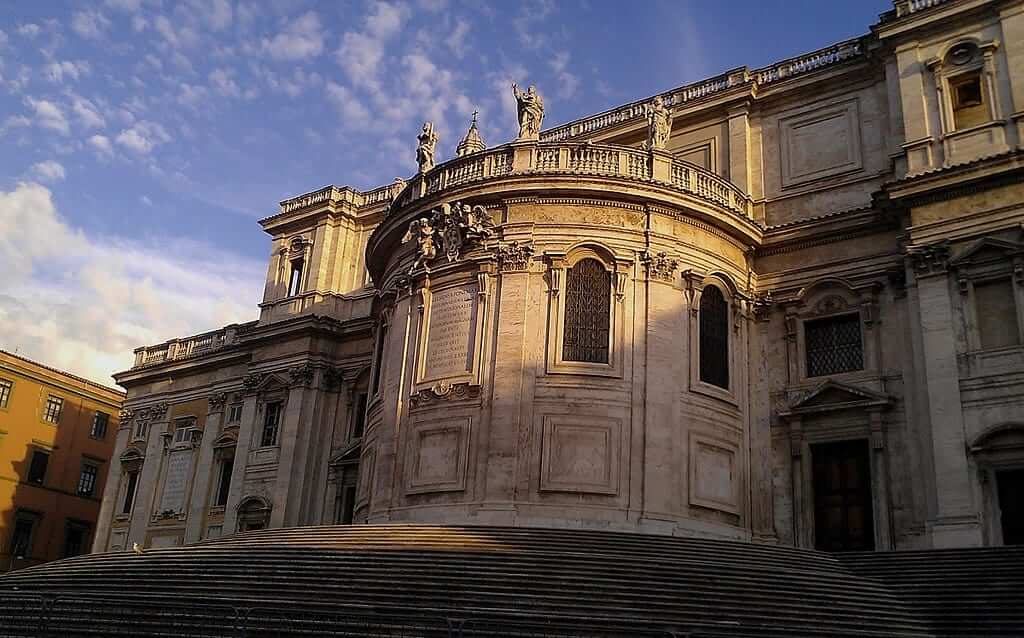
The Basilica di Santa Maria Maggiore is a very nice part of Rome. Filled with Italian ambiance, but without all of Rome’s chaos.
The oldest rione of Rome, Monti was the red-light district of the ancient city. Today it’s anything but. Monti is a splendid little neighborhood just outside of the slightly grittier Termini. It’s filled with traditional mom-and-pop-style trattorie and top-notch clothing boutiques. Here you’ll find the Basilica of Santa Maria Maggiore (one of the most jaw-dropping churches in Rome), the National Museum of Rome, the Colle Oppio Park and on the same hill, the opulent Domus Aurea.
If you want to visit some of Rome’s most awe-inspiring churches with an expert guide and private transport, check out our Major Basilicas of Rome Tour – a guaranteed trip highlight for any pilgrim or art lover.
Stay here if: You’re interested in ancient Roman history; you want to shop for Italian clothes, shoes or handbags in unique, independent boutiques; you’d like a suburban atmosphere; you want to explore the nearby Appian Way (Our complete guide to visiting the Appian Way will help you!); you want a bit of nightlife, but nothing too crazy; you’re looking for a friendly, village atmosphere.
Celio
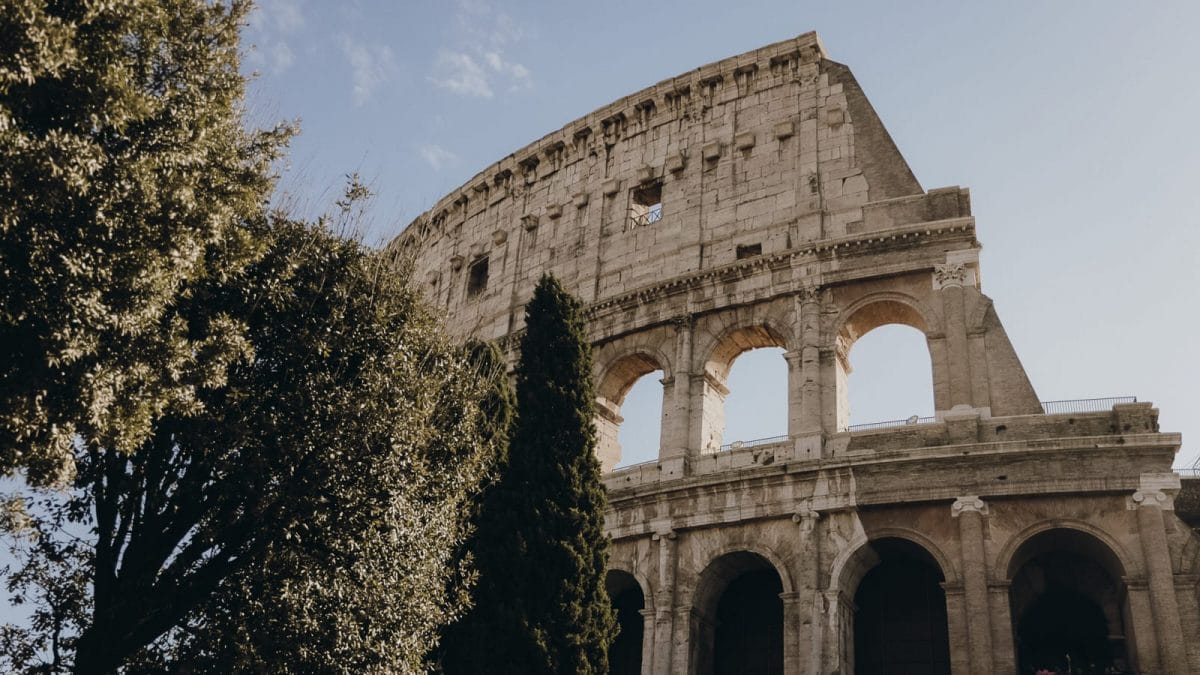
You’ll love taking an early morning walk around this magnificent monument.
Just southwest of Monti is the residential neighborhood of Celio with the imposing Colosseum sitting at its heart. The area around the Colosseum and Constantine’s Arch is touristy and chaotic during the day, but nighttime offers one of the most impressive views of the ancient amphitheater. Though there aren’t many hotels to choose from in Monti or Celio, this only adds to the residential feel. Though the Colosseum, Roman Forum, Circus Maximus and Palatine Hill dominate this district, be sure to also visit the beautiful Basilica of Saint John the Lateran (the official cathedral of Rome) during your stay. Let local experts give you a tour of ancient Rome (that’s the Colosseum, Roman Forum, and the Palatine Hill) with express passes on our Premium Colosseum Tour.
Stay here if: You’re interested in experiencing a more suburban Rome; you have already seen the historic city center sites and want to tour the Colosseum and Roman Forum; you don’t need to be close to the Vatican; you’re fascinated by Roman ruins.
Aventine
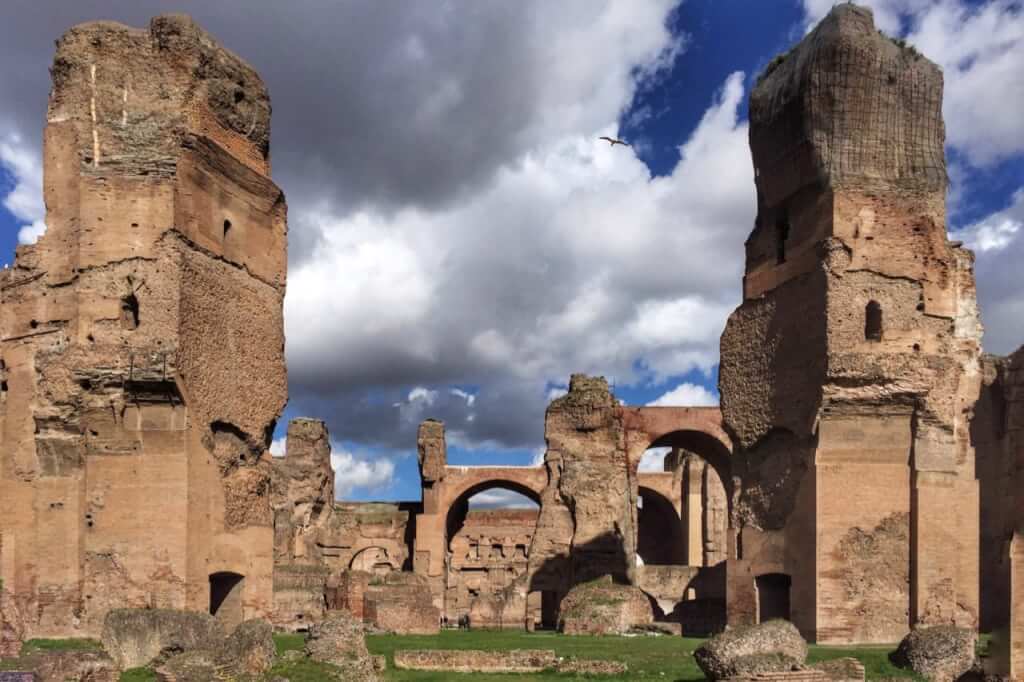
The second largest public baths in ancient Rome, it’s said that the design of the Caracalla Baths even inspired the original Pennsylvania Station in New York City. Photo by Teldridge
It can be hard to distinguish where Celio ends and Aventine begins, the two are so near and so similar. Aventine is a bit further away from any “major” sights (at least a 15-minute walk) and its size and location mean there are few hotels to choose from, but the greenery and hidden gems make it one of the loveliest districts of Rome. Tour the baths of Caracalla, the Rose Garden, and the famous “Knights of Malta Keyhole,” an unassuming keyhole in an unassuming gate which gives anyone who peers through it a spectacular view. Aventine also happens to have some of the nicest houses in Rome, so if you want to see how Rome’s wealthiest live, this is a good spot for a bit of real estate gazing.
You can see some of Aventine’s most unexpected local attractions on our Rome as a Local Tour.
Stay here if: You want something even quieter than the suburban neighborhood of Celio; you like to step “off the beaten path”; you want to escape the tourists; you don’t need much nightlife; you’re hoping the romance of Rome will spur a civil marriage in the tiny Santa Maria in Tempulo church nearby; you want to go jogging along the tree-lined road of the Baths of Caracalla; you don’t mind being a bit outside of the action.
Testaccio
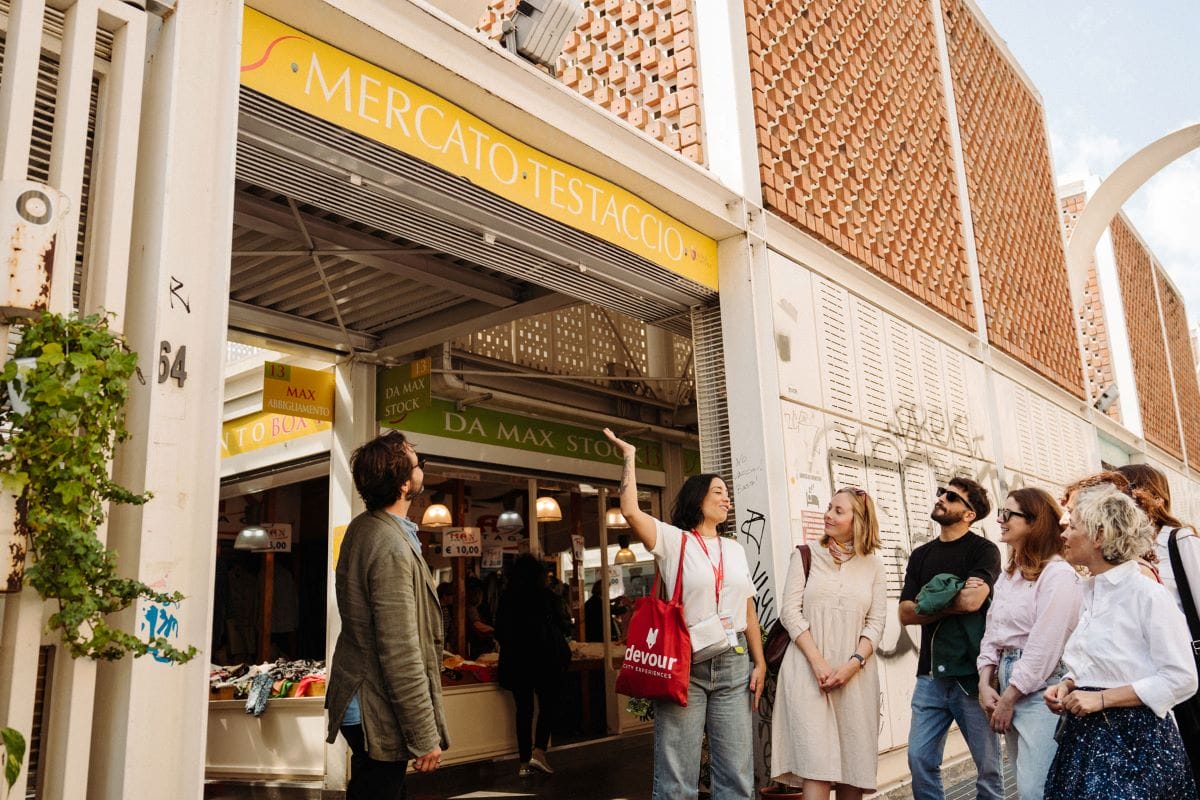
Staying in Testaccio means you’ll be able to visit local markets to get a feel for how locals live.
Testaccio, on the outskirts of Rome, is more modern, more classically urban and by far the liveliest of all Rome’s rioni. With a buzzing nightlife, it’s also one of the least touristy districts in Rome. Actually, the neighborhood is built on a hill created from an ancient Romans landfill, but today it’s one of the most authentic glimpses into real-life Rome. The rione is also connected to Rome’s main attractions by metro or bus.
Stay here if: You’re looking for a completely non-touristic side of Rome; you want something a bit more modern; you want to stay outside of the city center but in a safe rione; you want to save a load of money and still have nice accommodation; you don’t mind taking public transportation.
With frequent buses and the metro, Testaccio is connected to the Centro Storico, Colosseum, or Trastevere by just a 5 to 15-minute ride depending on where you’re going and what the traffic is like. It’s where to stay in Rome for visitors who want to enjoy authentic Roman nightlife at its most vibrant.
Trastevere
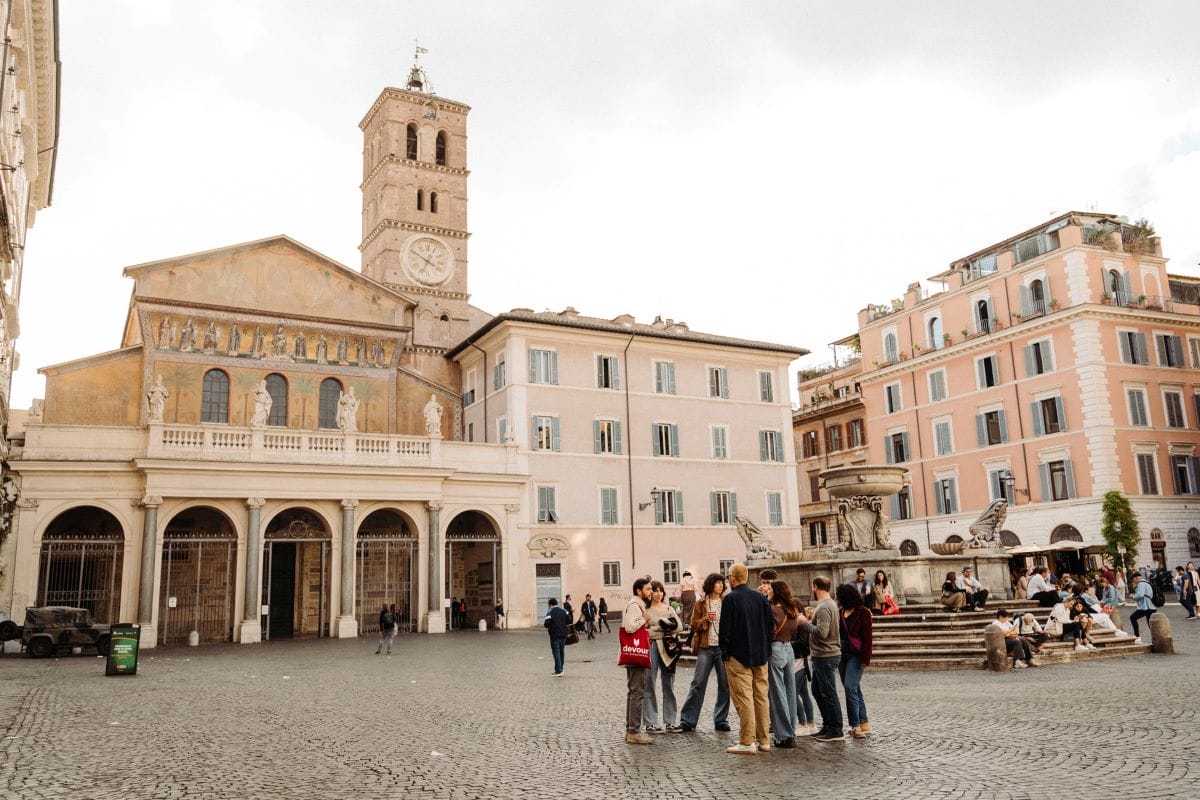
Trastevere neighborhood is known for its picturesque squares and quaint streets.
On the other side of the Tiber River is the hip Trastevere, which takes its name from being on the other side of the Tiber (or Tevere, in Italian) from central Rome. One of the most popular and visited rioni in Rome, Trastevere is filled with great shops, restaurants, and spots for a nighttime aperitivo. In fact, the neighborhood boasts some of the best nightlife in Rome. During the day, stay in the neighborhood with a visit to the Basilica di Santa Maria in Trastevere, the Museo di Roma, the Botanical Garden and the Gianicolo.
Stay here if: Your idea of a perfect neighborhood is offbeat and a bit bohemian; you’re coming for the nightlife; you don’t mind hipsters; you don’t mind a bit of noise at night; you want to explore the tiny streets and stone alleyways in a lively atmosphere.
Flaminio and Parioli
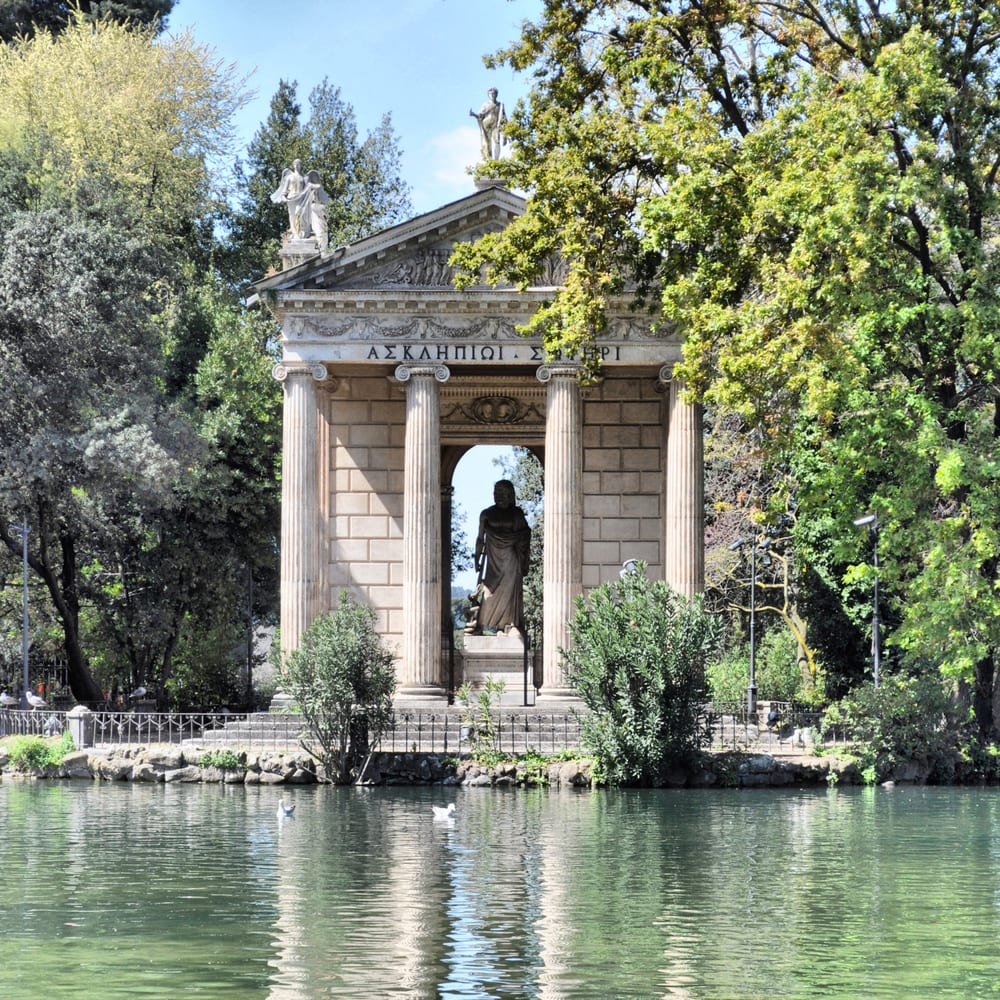
Finding green space in the center of Rome really isn’t that difficult — just head to Villa Borghese.
Though neither Flaminio nor Parioli is centrally located, they are by far the most elegant neighborhoods of Rome. As residential areas, they are both filled with magnificent villas, museums, and fancy restaurants. In Flaminio, you’ll find the MAXXI Art Gallery, designed by the late architect Zaha Hadid, and the Flaminio Stadium. Parioli, on the other hand, is nestled around the gorgeous (and massive) Villa Borghese gardens. Inhabited by wealthy Romans, politicians and more than a few foreign embassies, this upper-class area is also one of the safest in the city. Visit the Villa Borghese, Villa Ada, Ponte Milvio and the National Gallery of Modern and Contemporary Art (GNAM). If you want to know more about modern art in Italy, you can read our blog about Italy’s modern art scene.
Though most visitors only take a quick walk through the Borghese Gardens, art lovers will relish a peek inside to see masterworks by Caravaggio, Raphael, and Bernini on our Borghese Gallery Tour. With pre-booked tickets and an expert guide, you’ll explore the masterpieces of the Borghese Gallery, rarely seen by visitors to Rome.
Stay here if: you want a tranquil atmosphere; your idea of a Roman vacation includes long strolls in enormous gardens and along clean, tree-lined avenues; you want to ogle the beautiful palazzi and other residential buildings of the neighborhood; you’re traveling with kids who love parks and a slower pace; you love modern art; you plan on frequenting fashionable bars and restaurants; you want to rub shoulders with the Italian jet set.
Vatican City and Prati
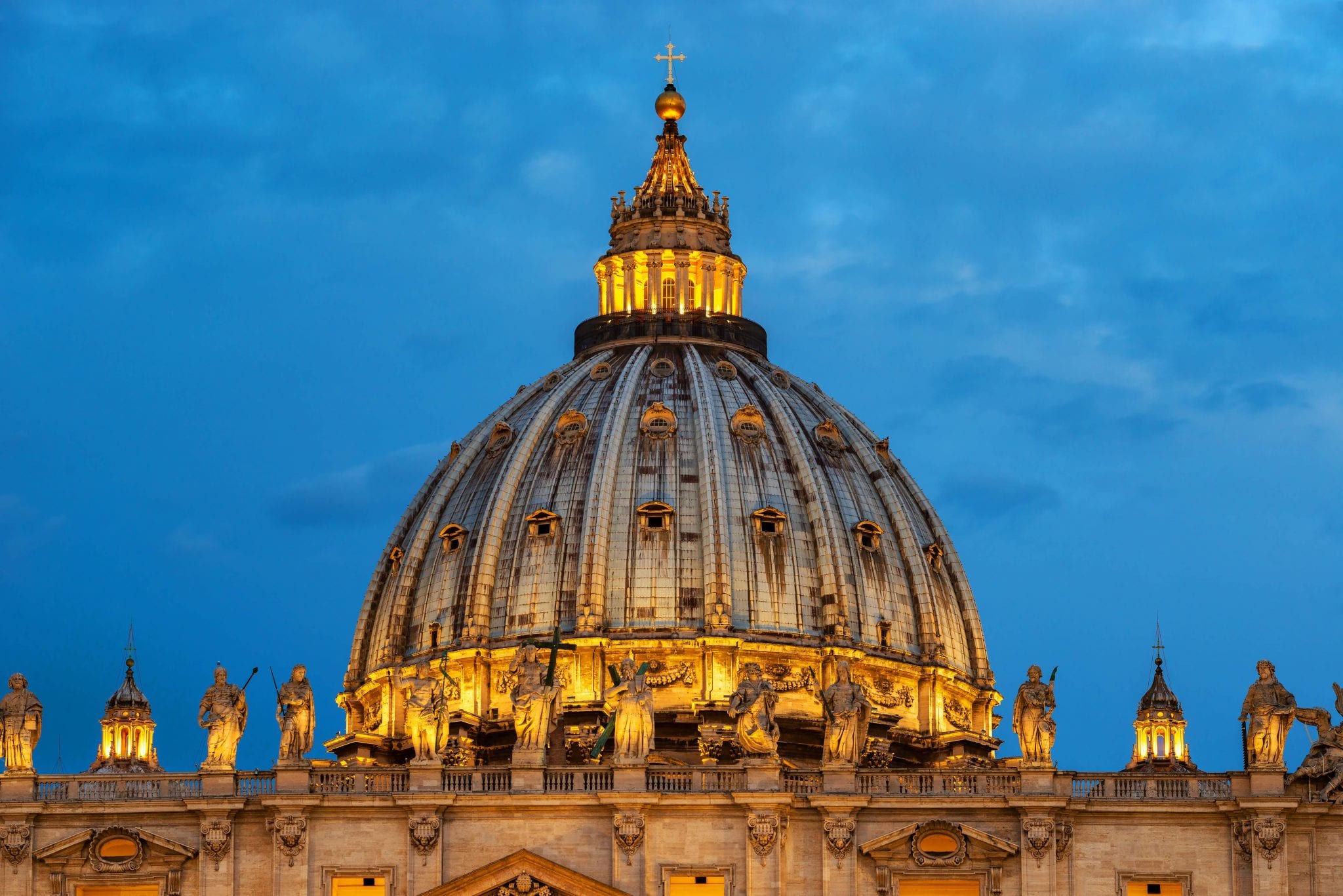
St. Peter’s Basilica in Vatican City
Though the Vatican City is technically an entirely separate city-state from Rome, it’s actually just across the Tiber from Rome’s city center and it’s where to stay in Rome if you want to divide your time between exploring both Rome and the Vatican. The Borgo district, the area surrounding St. Peter’s Cathedral and the Vatican Museums, can be too touristy, but The Prati district to the east is a completely different story. Built relatively late in the city’s history, the wide boulevards and straight roads are much more organized than the small, chaotic streets of Rome. With fewer souvenir shops and more dining, Prati has reasonable hotel prices as well.
Besides St. Peter’s Basilica, visitors who stay in this area of Rome can find the Vatican Museums, Sistine Chapel, Vatican gardens, Castel San’Angelo, Cortile del Belvedere and hundreds of gorgeous, historic chapels, churches, and basilicas.
Stay here if: You want to primarily explore the Vatican City; Prati’s well-organized streets appeal to your sense of order; you don’t mind the crowds; you want to focus your sightseeing on the Vatican and Rome’s city center, rather than the via Appia Antica or contemporary art museums on the other side of town; you want to explore Rome’s Catholic heritage; you want to arrive early for an audience with the pope (Read our post on Pope Francis to learn how to have an audience with the Pope); you want an affordable hotel.
For those traveling with kids or short on time, get an early entrance ticket to the Sistine Chapel and an express entrance to St. Peter’s Basilica with our new Sistine Chapel Express Service Tour.
Read more: The Best Food to Eat in Rome
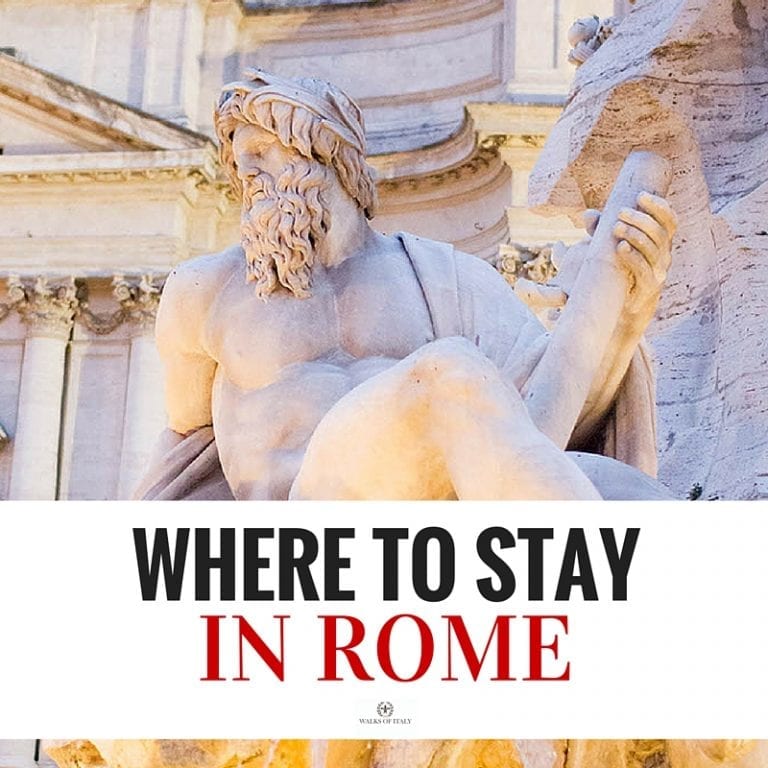
by Gina Mussio
View more by Gina ›Book a Tour
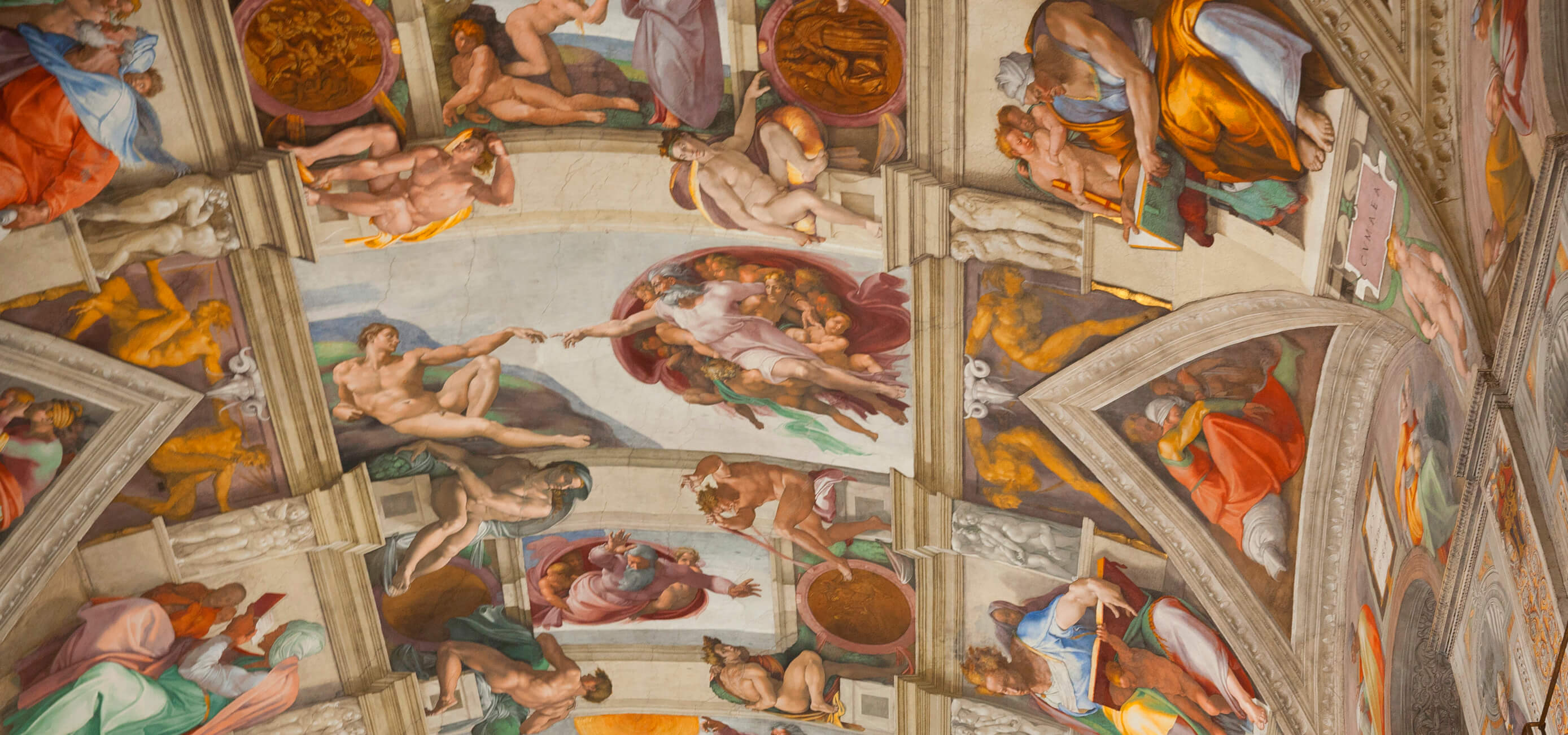
Pristine Sistine - The Chapel at its Best
€89
1794 reviews
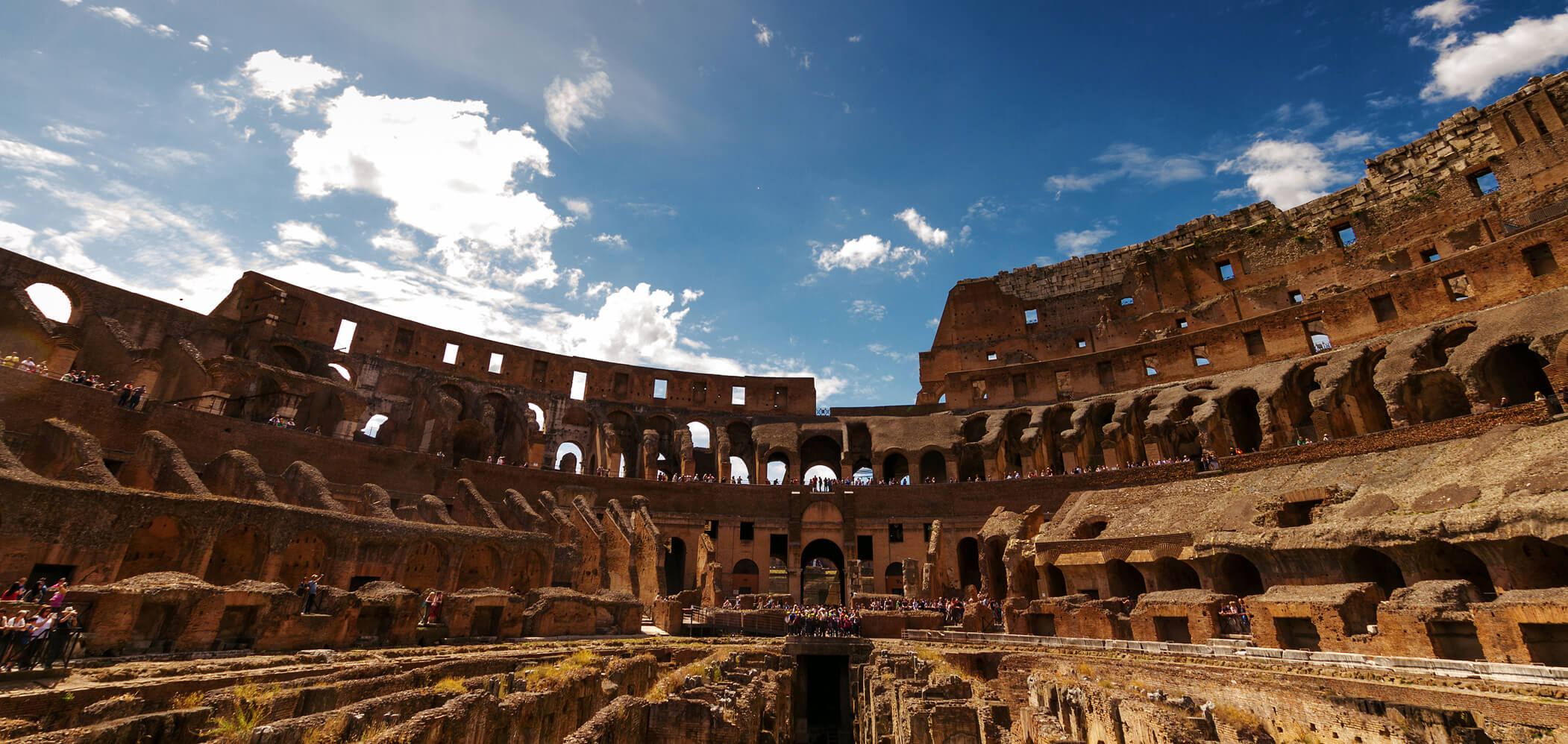
Premium Colosseum Tour with Roman Forum Palatine Hill
€56
850 reviews
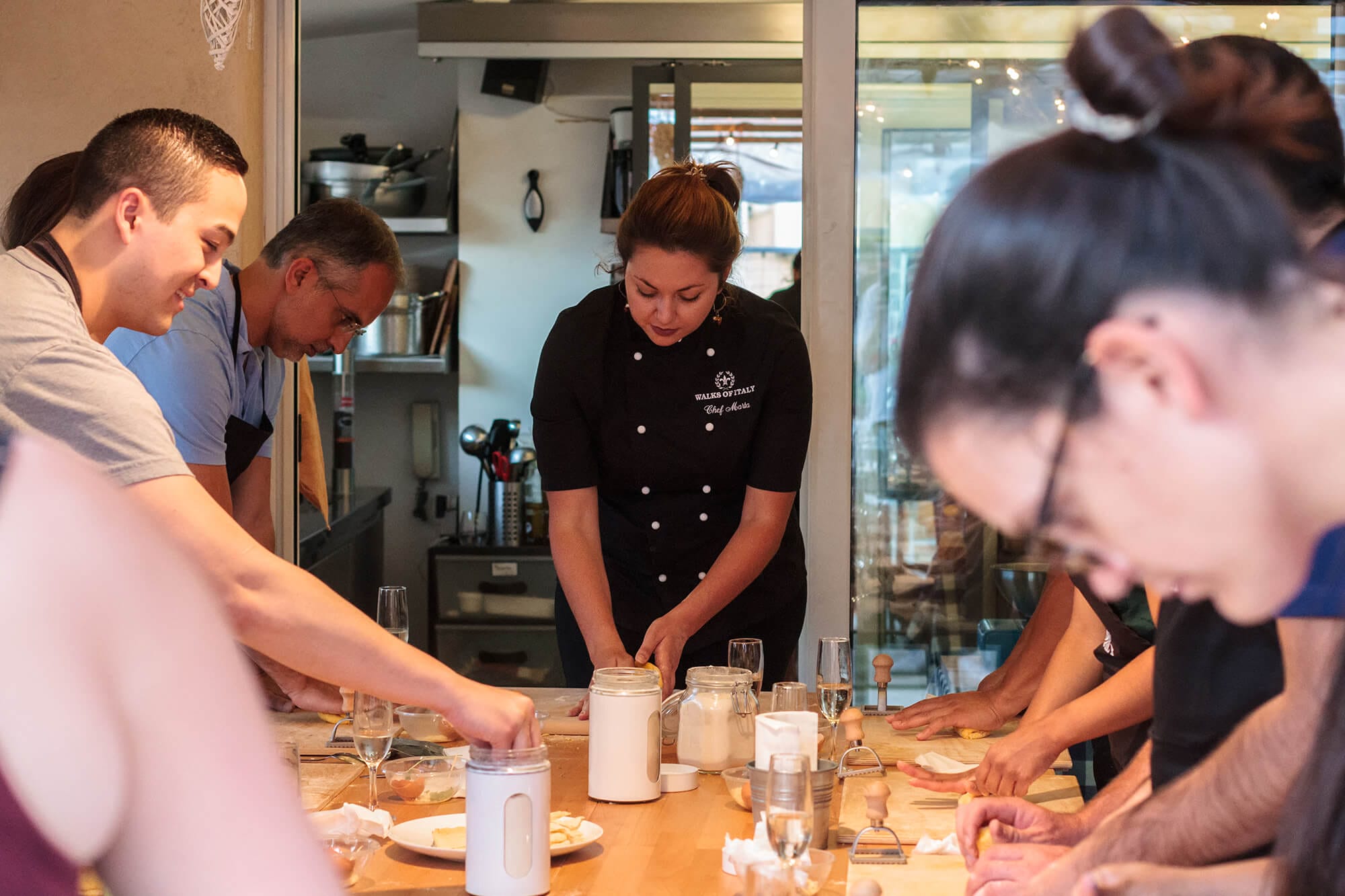
Pasta-Making Class: Cook, Dine Drink Wine with a Local Chef
€64
121 reviews
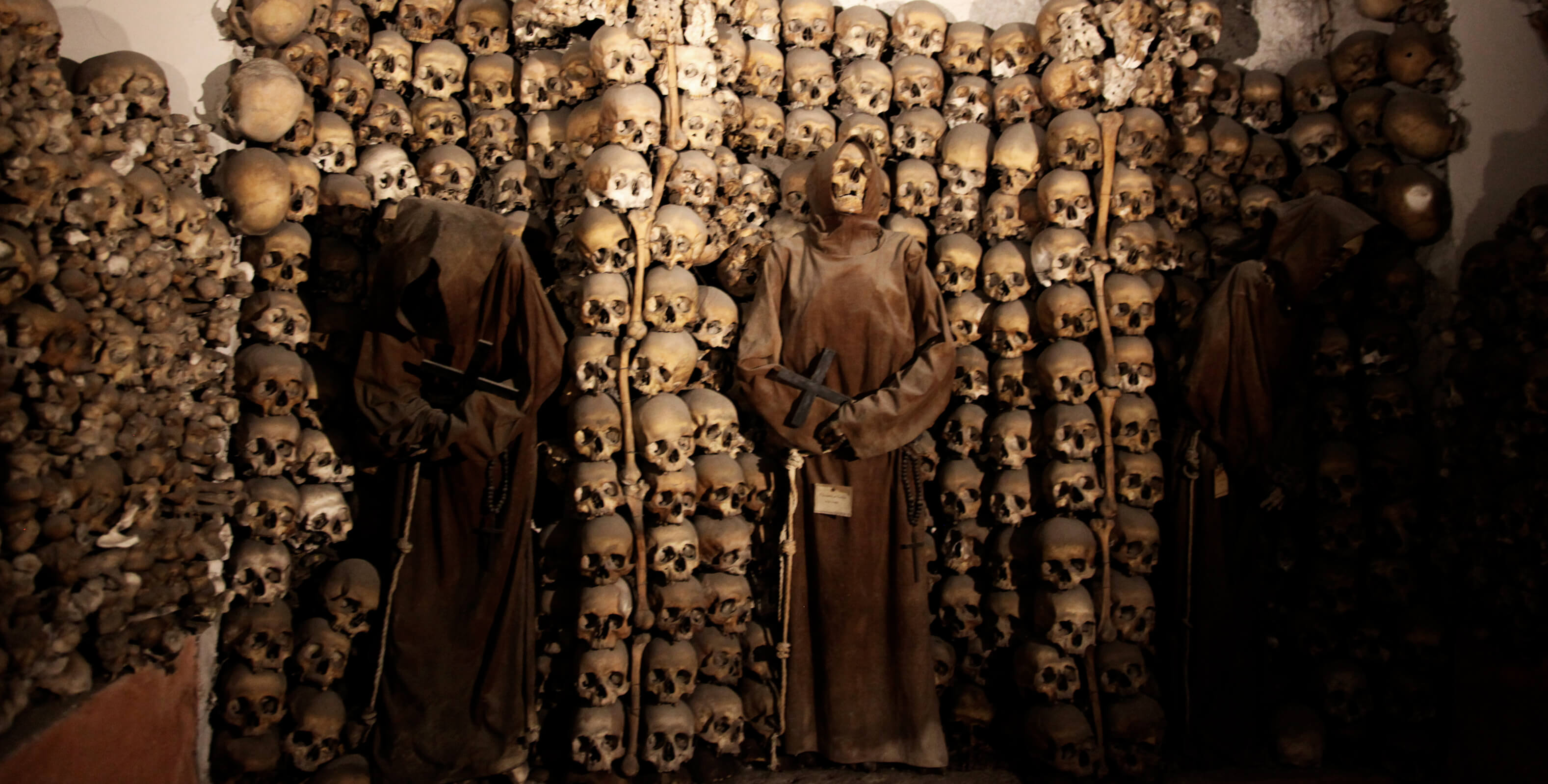
Crypts, Bones Catacombs: Underground Tour of Rome
€69
401 reviews
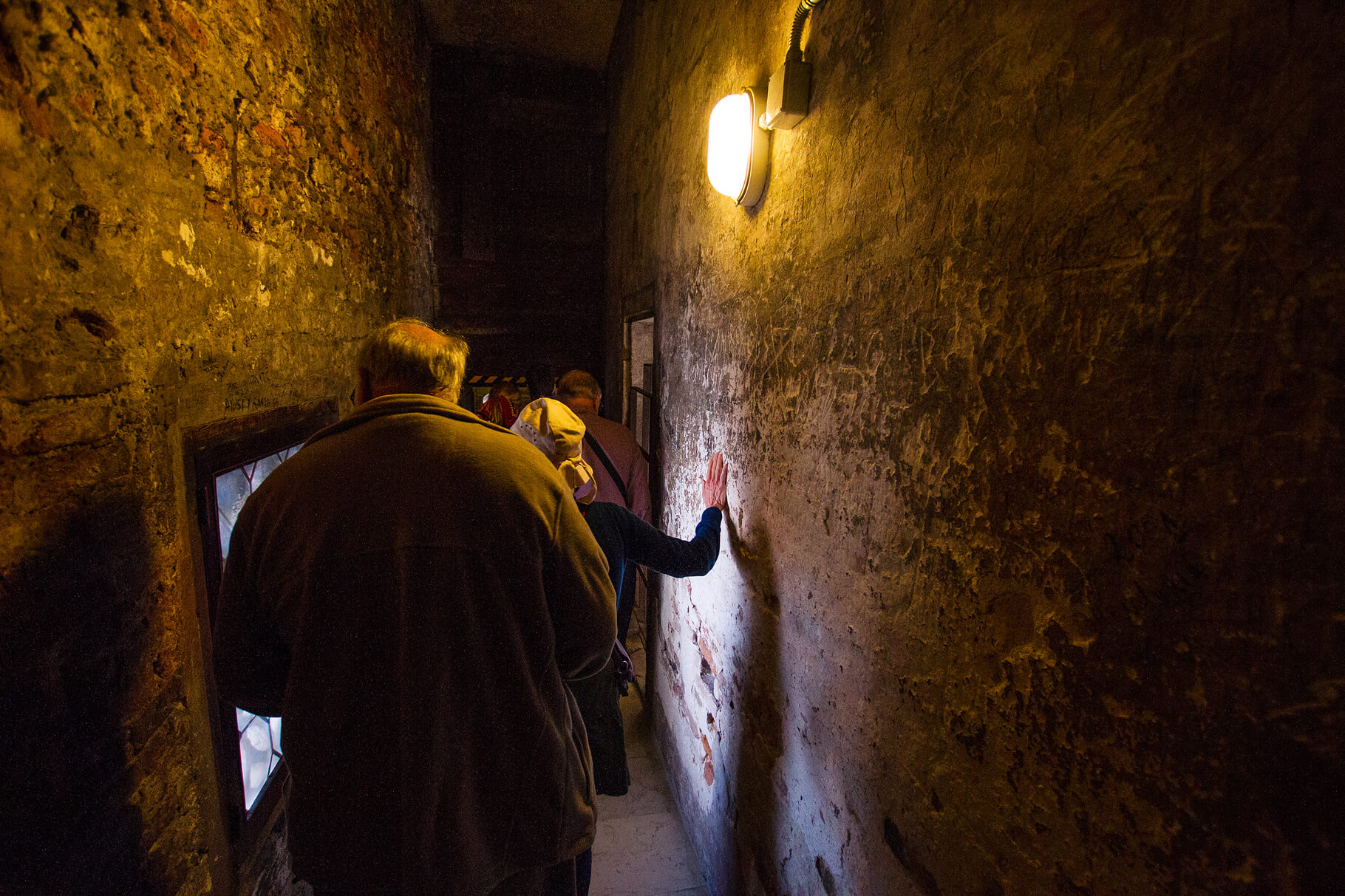
VIP Doge's Palace Secret Passages Tour
€79
18 reviews
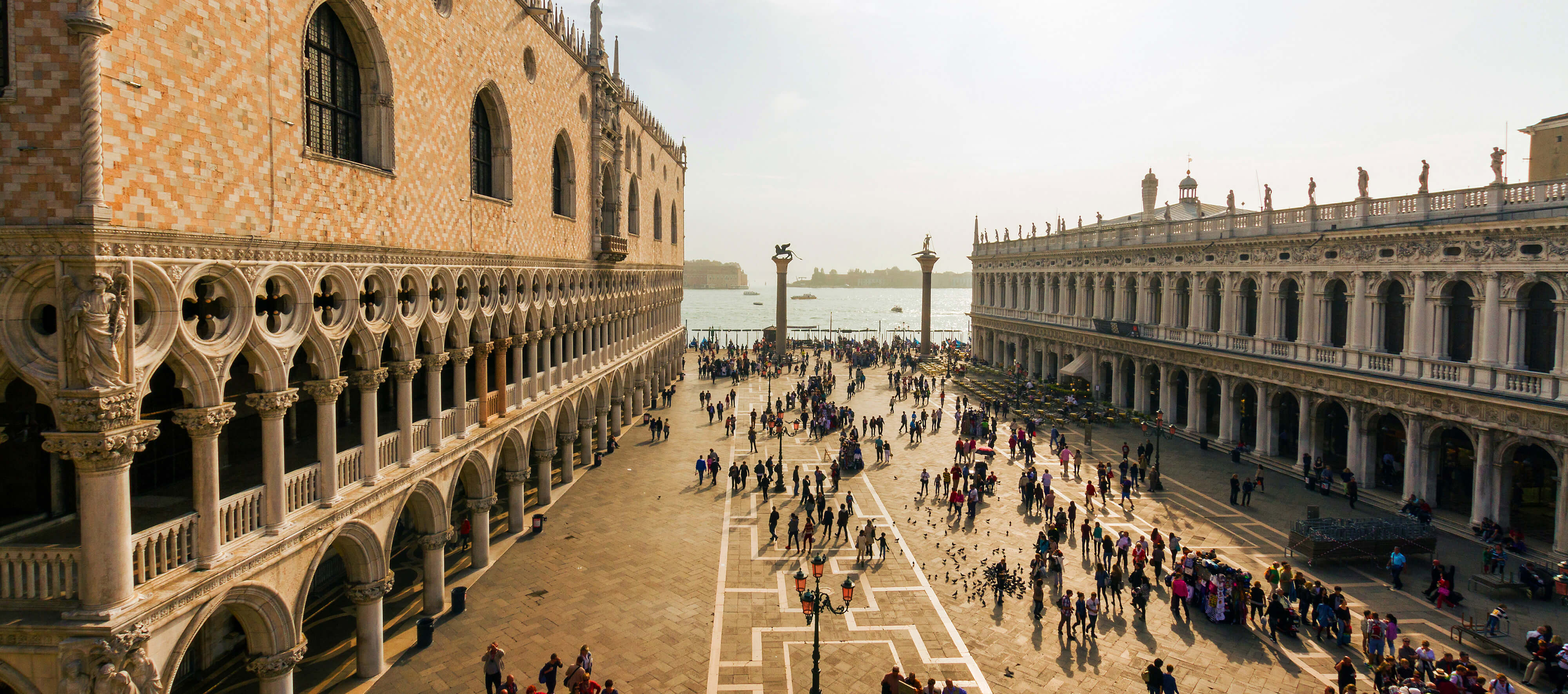
Legendary Venice: St. Mark's Basilica, Terrace Doge's Palace
€69
286 reviews

